Renormalization group scale-setting from the action-a road to modified gravity theories
Updated: 2012-10-31 17:16:57
. Contact us Help Shopping cart Home About us Article title , keywords or abstract Article title Publication title Author Advanced search Subject Publisher Publication Browse : by Home Classical and Quantum Gravity Volume 29, Number 23 Renormalization group scale-setting from the action-a road to modified gravity theories Authors : Domazet , Silvije Štefančić , Hrvoje : Source Classical and Quantum Gravity Volume 29, Number 23, 7 December 2012 pp . 235005-235012(8 Publisher : IOP Publishing view table of contents next article Buy download fulltext : article OR Pressing the buy now button more than once may result in multiple purchases Price : 46.17 plus tax Refund Policy : Abstract The renormalization group RG corrected gravitational action in Einstein-Hilbert and other truncations is

 WIRED Gear Gadget Lab Why Apple and You Might Miss Scott Forstall Nexus 10 : Hands-On With Google and Samsung’s iPad Challenger Fact Check : Microsoft’s Claims About App Numbers for Windows Phone Autopia Watch This Amazing , 360-Degree On-Board Video of Red Bull’s F1 Racer At Least 16 Fisker Karmas Drown , Catch Fire at New Jersey Port Sandy Cripples East Coast Transit Reviews D-Link’s Streamer Box Joins the Fray Ear Medicine Urban Runabouts Science Science Tricks and Treats : 12 Amazing Things About Bats Curiosity Rover’s First X-Ray Analysis Reveals Volcanic Martian Soil Wired Science Space Photo of the Day : Degas on Mercury Science Blogs Looking Inside The Dead : The Rise Of Virtual Autopsy The World’s Largest Wetland is Not Where You’d Expect Phreatic Explosion at Poás in Costa Rica
WIRED Gear Gadget Lab Why Apple and You Might Miss Scott Forstall Nexus 10 : Hands-On With Google and Samsung’s iPad Challenger Fact Check : Microsoft’s Claims About App Numbers for Windows Phone Autopia Watch This Amazing , 360-Degree On-Board Video of Red Bull’s F1 Racer At Least 16 Fisker Karmas Drown , Catch Fire at New Jersey Port Sandy Cripples East Coast Transit Reviews D-Link’s Streamer Box Joins the Fray Ear Medicine Urban Runabouts Science Science Tricks and Treats : 12 Amazing Things About Bats Curiosity Rover’s First X-Ray Analysis Reveals Volcanic Martian Soil Wired Science Space Photo of the Day : Degas on Mercury Science Blogs Looking Inside The Dead : The Rise Of Virtual Autopsy The World’s Largest Wetland is Not Where You’d Expect Phreatic Explosion at Poás in Costa Rica On July 4, scientists around the world popped open champagne bottles and toasted the culmination of nearly five decades of research. They had discovered a new particle, one that looked awfully similar to the long-sought Higgs boson.
The Higgs boson has for decades been the last missing piece of the Standard Model of particle physics. But even if the new particle completes the puzzle, some of its pieces still refuse to fit.
On July 4, scientists around the world popped open champagne bottles and toasted the culmination of nearly five decades of research. They had discovered a new particle, one that looked awfully similar to the long-sought Higgs boson.
The Higgs boson has for decades been the last missing piece of the Standard Model of particle physics. But even if the new particle completes the puzzle, some of its pieces still refuse to fit. Subscribe Today Renew Give a Gift Archives Customer Service Facebook Twitter Newsletter SEARCH Health Medicine Mind Brain Technology Space Human Origins Living World Environment Physics Math Video Photos Podcast RSS Time lapse : Close to the Heavens A wind is rising Looking up to Saturn Just in case you’ve forgotten how brain-destroyingly big Saturn : is Click to encronosenate . This shot of the ringed wonder was taken by the Cassini spacecraft when it was well over 2 million kilometers from the planet . The spacecraft was south of the rings , looking up toward the north . The Sun is shining down on the rings from this perspective , so they look darker than you might expect , and the use of a near-infrared filter accentuates storms in the southern hemisphere . cloudtops So why does this
Subscribe Today Renew Give a Gift Archives Customer Service Facebook Twitter Newsletter SEARCH Health Medicine Mind Brain Technology Space Human Origins Living World Environment Physics Math Video Photos Podcast RSS Time lapse : Close to the Heavens A wind is rising Looking up to Saturn Just in case you’ve forgotten how brain-destroyingly big Saturn : is Click to encronosenate . This shot of the ringed wonder was taken by the Cassini spacecraft when it was well over 2 million kilometers from the planet . The spacecraft was south of the rings , looking up toward the north . The Sun is shining down on the rings from this perspective , so they look darker than you might expect , and the use of a near-infrared filter accentuates storms in the southern hemisphere . cloudtops So why does this : CURRENT ISSUE THE MAGAZINE Current Issue Next Issue Back Issues Digital Editions Preview the Magazine Special Issues E-mail Newsletter About the Magazine Subscribe , Renew or Give a Gift Subscriber Benefits Trips Tours Advertise Advertiser Links Sweepstakes Press Room Contact Us COLUMNISTS Bob Berman Glenn Chaple Tony Hallas David H . Levy Stephen James O'Meara NEWS OBSERVING Astronomy News Liz and Bill's Cosmic Adventures Dave's Universe videos StarDome Plus Intro to the Sky Astronomy for Kids Urban Skies Astronomy Myths The Sky this Week The Sky this Month Star Atlas Ask Astro Astro Imaging Constellation Observing Glossary EQUIPMENT Products Reviews How To MULTIMEDIA Picture of the Day Reader Photo Gallery Videos Podcasts Wallpaper COMMUNITY Why Join Local Group Blog Dave's Universe
: CURRENT ISSUE THE MAGAZINE Current Issue Next Issue Back Issues Digital Editions Preview the Magazine Special Issues E-mail Newsletter About the Magazine Subscribe , Renew or Give a Gift Subscriber Benefits Trips Tours Advertise Advertiser Links Sweepstakes Press Room Contact Us COLUMNISTS Bob Berman Glenn Chaple Tony Hallas David H . Levy Stephen James O'Meara NEWS OBSERVING Astronomy News Liz and Bill's Cosmic Adventures Dave's Universe videos StarDome Plus Intro to the Sky Astronomy for Kids Urban Skies Astronomy Myths The Sky this Week The Sky this Month Star Atlas Ask Astro Astro Imaging Constellation Observing Glossary EQUIPMENT Products Reviews How To MULTIMEDIA Picture of the Day Reader Photo Gallery Videos Podcasts Wallpaper COMMUNITY Why Join Local Group Blog Dave's Universe CURRENT ISSUE THE MAGAZINE Current Issue Next Issue Back Issues Digital Editions Preview the Magazine Special Issues E-mail Newsletter About the Magazine Subscribe , Renew or Give a Gift Subscriber Benefits Trips Tours Advertise Advertiser Links Sweepstakes Press Room Contact Us COLUMNISTS Bob Berman Glenn Chaple Tony Hallas David H . Levy Stephen James O'Meara NEWS OBSERVING Astronomy News Liz and Bill's Cosmic Adventures Dave's Universe videos StarDome Plus Intro to the Sky Astronomy for Kids Urban Skies Astronomy Myths The Sky this Week The Sky this Month Star Atlas Ask Astro Astro Imaging Constellation Observing Glossary EQUIPMENT Products Reviews How To MULTIMEDIA Picture of the Day Reader Photo Gallery Videos Podcasts Wallpaper COMMUNITY Why Join Local Group Blog Dave's Universe
CURRENT ISSUE THE MAGAZINE Current Issue Next Issue Back Issues Digital Editions Preview the Magazine Special Issues E-mail Newsletter About the Magazine Subscribe , Renew or Give a Gift Subscriber Benefits Trips Tours Advertise Advertiser Links Sweepstakes Press Room Contact Us COLUMNISTS Bob Berman Glenn Chaple Tony Hallas David H . Levy Stephen James O'Meara NEWS OBSERVING Astronomy News Liz and Bill's Cosmic Adventures Dave's Universe videos StarDome Plus Intro to the Sky Astronomy for Kids Urban Skies Astronomy Myths The Sky this Week The Sky this Month Star Atlas Ask Astro Astro Imaging Constellation Observing Glossary EQUIPMENT Products Reviews How To MULTIMEDIA Picture of the Day Reader Photo Gallery Videos Podcasts Wallpaper COMMUNITY Why Join Local Group Blog Dave's Universe CURRENT ISSUE THE MAGAZINE Current Issue Next Issue Back Issues Digital Editions Preview the Magazine Special Issues E-mail Newsletter About the Magazine Subscribe , Renew or Give a Gift Subscriber Benefits Trips Tours Advertise Advertiser Links Sweepstakes Press Room Contact Us COLUMNISTS Bob Berman Glenn Chaple Tony Hallas David H . Levy Stephen James O'Meara NEWS OBSERVING Astronomy News Liz and Bill's Cosmic Adventures Dave's Universe videos StarDome Plus Intro to the Sky Astronomy for Kids Urban Skies Astronomy Myths The Sky this Week The Sky this Month Star Atlas Ask Astro Astro Imaging Constellation Observing Glossary EQUIPMENT Products Reviews How To MULTIMEDIA Picture of the Day Reader Photo Gallery Videos Podcasts Wallpaper COMMUNITY Why Join Local Group Blog Dave's Universe
CURRENT ISSUE THE MAGAZINE Current Issue Next Issue Back Issues Digital Editions Preview the Magazine Special Issues E-mail Newsletter About the Magazine Subscribe , Renew or Give a Gift Subscriber Benefits Trips Tours Advertise Advertiser Links Sweepstakes Press Room Contact Us COLUMNISTS Bob Berman Glenn Chaple Tony Hallas David H . Levy Stephen James O'Meara NEWS OBSERVING Astronomy News Liz and Bill's Cosmic Adventures Dave's Universe videos StarDome Plus Intro to the Sky Astronomy for Kids Urban Skies Astronomy Myths The Sky this Week The Sky this Month Star Atlas Ask Astro Astro Imaging Constellation Observing Glossary EQUIPMENT Products Reviews How To MULTIMEDIA Picture of the Day Reader Photo Gallery Videos Podcasts Wallpaper COMMUNITY Why Join Local Group Blog Dave's Universe CURRENT ISSUE THE MAGAZINE Current Issue Next Issue Back Issues Digital Editions Preview the Magazine Special Issues E-mail Newsletter About the Magazine Subscribe , Renew or Give a Gift Subscriber Benefits Trips Tours Advertise Advertiser Links Sweepstakes Press Room Contact Us COLUMNISTS Bob Berman Glenn Chaple Tony Hallas David H . Levy Stephen James O'Meara NEWS OBSERVING Astronomy News Liz and Bill's Cosmic Adventures Dave's Universe videos StarDome Plus Intro to the Sky Astronomy for Kids Urban Skies Astronomy Myths The Sky this Week The Sky this Month Star Atlas Ask Astro Astro Imaging Constellation Observing Glossary EQUIPMENT Products Reviews How To MULTIMEDIA Picture of the Day Reader Photo Gallery Videos Podcasts Wallpaper COMMUNITY Why Join Local Group Blog Dave's Universe
CURRENT ISSUE THE MAGAZINE Current Issue Next Issue Back Issues Digital Editions Preview the Magazine Special Issues E-mail Newsletter About the Magazine Subscribe , Renew or Give a Gift Subscriber Benefits Trips Tours Advertise Advertiser Links Sweepstakes Press Room Contact Us COLUMNISTS Bob Berman Glenn Chaple Tony Hallas David H . Levy Stephen James O'Meara NEWS OBSERVING Astronomy News Liz and Bill's Cosmic Adventures Dave's Universe videos StarDome Plus Intro to the Sky Astronomy for Kids Urban Skies Astronomy Myths The Sky this Week The Sky this Month Star Atlas Ask Astro Astro Imaging Constellation Observing Glossary EQUIPMENT Products Reviews How To MULTIMEDIA Picture of the Day Reader Photo Gallery Videos Podcasts Wallpaper COMMUNITY Why Join Local Group Blog Dave's Universe CURRENT ISSUE THE MAGAZINE Current Issue Next Issue Back Issues Digital Editions Preview the Magazine Special Issues E-mail Newsletter About the Magazine Subscribe , Renew or Give a Gift Subscriber Benefits Trips Tours Advertise Advertiser Links Sweepstakes Press Room Contact Us COLUMNISTS Bob Berman Glenn Chaple Tony Hallas David H . Levy Stephen James O'Meara NEWS OBSERVING Astronomy News Liz and Bill's Cosmic Adventures Dave's Universe videos StarDome Plus Intro to the Sky Astronomy for Kids Urban Skies Astronomy Myths The Sky this Week The Sky this Month Star Atlas Ask Astro Astro Imaging Constellation Observing Glossary EQUIPMENT Products Reviews How To MULTIMEDIA Picture of the Day Reader Photo Gallery Videos Podcasts Wallpaper COMMUNITY Why Join Local Group Blog Dave's Universe
CURRENT ISSUE THE MAGAZINE Current Issue Next Issue Back Issues Digital Editions Preview the Magazine Special Issues E-mail Newsletter About the Magazine Subscribe , Renew or Give a Gift Subscriber Benefits Trips Tours Advertise Advertiser Links Sweepstakes Press Room Contact Us COLUMNISTS Bob Berman Glenn Chaple Tony Hallas David H . Levy Stephen James O'Meara NEWS OBSERVING Astronomy News Liz and Bill's Cosmic Adventures Dave's Universe videos StarDome Plus Intro to the Sky Astronomy for Kids Urban Skies Astronomy Myths The Sky this Week The Sky this Month Star Atlas Ask Astro Astro Imaging Constellation Observing Glossary EQUIPMENT Products Reviews How To MULTIMEDIA Picture of the Day Reader Photo Gallery Videos Podcasts Wallpaper COMMUNITY Why Join Local Group Blog Dave's Universe , , CURRENT ISSUE THE MAGAZINE Current Issue Next Issue Back Issues Digital Editions Preview the Magazine Special Issues E-mail Newsletter About the Magazine Subscribe , Renew or Give a Gift Subscriber Benefits Trips Tours Advertise Advertiser Links Sweepstakes Press Room Contact Us COLUMNISTS Bob Berman Glenn Chaple Tony Hallas David H . Levy Stephen James O'Meara NEWS OBSERVING Astronomy News Liz and Bill's Cosmic Adventures Dave's Universe videos StarDome Plus Intro to the Sky Astronomy for Kids Urban Skies Astronomy Myths The Sky this Week The Sky this Month Star Atlas Ask Astro Astro Imaging Constellation Observing Glossary EQUIPMENT Products Reviews How To MULTIMEDIA Picture of the Day Reader Photo Gallery Videos Podcasts Wallpaper COMMUNITY Why Join Local Group Blog Dave's Universe
, , CURRENT ISSUE THE MAGAZINE Current Issue Next Issue Back Issues Digital Editions Preview the Magazine Special Issues E-mail Newsletter About the Magazine Subscribe , Renew or Give a Gift Subscriber Benefits Trips Tours Advertise Advertiser Links Sweepstakes Press Room Contact Us COLUMNISTS Bob Berman Glenn Chaple Tony Hallas David H . Levy Stephen James O'Meara NEWS OBSERVING Astronomy News Liz and Bill's Cosmic Adventures Dave's Universe videos StarDome Plus Intro to the Sky Astronomy for Kids Urban Skies Astronomy Myths The Sky this Week The Sky this Month Star Atlas Ask Astro Astro Imaging Constellation Observing Glossary EQUIPMENT Products Reviews How To MULTIMEDIA Picture of the Day Reader Photo Gallery Videos Podcasts Wallpaper COMMUNITY Why Join Local Group Blog Dave's Universe Subscribe Today Renew Give a Gift Archives Customer Service Facebook Twitter Newsletter SEARCH Health Medicine Mind Brain Technology Space Human Origins Living World Environment Physics Math Video Photos Podcast RSS Awkwardly Embraceable interview The return of Sauron’s planet Frankenstorm and the Dragon Holy wow , check this out : I grabbed a screenshot from footage on October 26 of Hurricane Sandy from the International Space : Station Yegads . Look at the storm center you can see it towering above the cloud deck and feeder bands of the storm . As if that’s not cool enough , that bit of hardware on the left is actually the SpaceX Dragon capsule , berthed to the ISS since October 10. It is expected to undock and return to Earth on Sunday , splashing down in the Pacific ocean at 12:20 PDT
Subscribe Today Renew Give a Gift Archives Customer Service Facebook Twitter Newsletter SEARCH Health Medicine Mind Brain Technology Space Human Origins Living World Environment Physics Math Video Photos Podcast RSS Awkwardly Embraceable interview The return of Sauron’s planet Frankenstorm and the Dragon Holy wow , check this out : I grabbed a screenshot from footage on October 26 of Hurricane Sandy from the International Space : Station Yegads . Look at the storm center you can see it towering above the cloud deck and feeder bands of the storm . As if that’s not cool enough , that bit of hardware on the left is actually the SpaceX Dragon capsule , berthed to the ISS since October 10. It is expected to undock and return to Earth on Sunday , splashing down in the Pacific ocean at 12:20 PDT  In Wim Leemans’ lab at Lawrence Berkeley National Laboratory sits one of the world’s most advanced R&D accelerators. By pushing electrons forward on the crest of plasma waves, the accelerator is capable of accelerating electron bunches from an energy of 0 to 1 billion electronvolts in just 3 centimeters. But, until now, Leemans and his team were unable to quantify exactly how uniform that acceleration was within a bunch of electrons. This measurement is especially important for one of the most promising applications of plasma accelerators: free-electron lasers.
In Wim Leemans’ lab at Lawrence Berkeley National Laboratory sits one of the world’s most advanced R&D accelerators. By pushing electrons forward on the crest of plasma waves, the accelerator is capable of accelerating electron bunches from an energy of 0 to 1 billion electronvolts in just 3 centimeters. But, until now, Leemans and his team were unable to quantify exactly how uniform that acceleration was within a bunch of electrons. This measurement is especially important for one of the most promising applications of plasma accelerators: free-electron lasers. DonorsChoose is a great program that lets people give small (or large, if that’s how they roll) charitable donations targeted at specific classrooms and educational programs around the country. We have participated frequently in the past, but this year we didn’t quite get our act together. But it doesn’t matter who sets up the donors [...]
DonorsChoose is a great program that lets people give small (or large, if that’s how they roll) charitable donations targeted at specific classrooms and educational programs around the country. We have participated frequently in the past, but this year we didn’t quite get our act together. But it doesn’t matter who sets up the donors [...]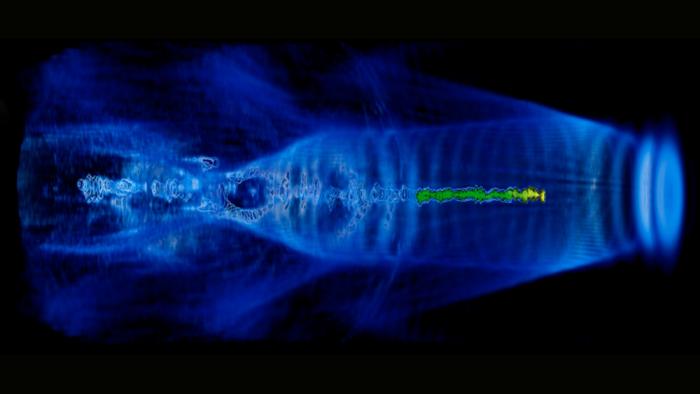 Seeking less costly, more efficient means of particle acceleration, physicists are developing new types of machines that zip particles to high energies in short distances. One promising method harnesses the power of plasma, accelerating electron bunches on the crest of plasma waves. Physicists recently discovered a way to measure the focus of such a beam, despite the fact that the plasma would melt traditional diagnostic tools.
Seeking less costly, more efficient means of particle acceleration, physicists are developing new types of machines that zip particles to high energies in short distances. One promising method harnesses the power of plasma, accelerating electron bunches on the crest of plasma waves. Physicists recently discovered a way to measure the focus of such a beam, despite the fact that the plasma would melt traditional diagnostic tools.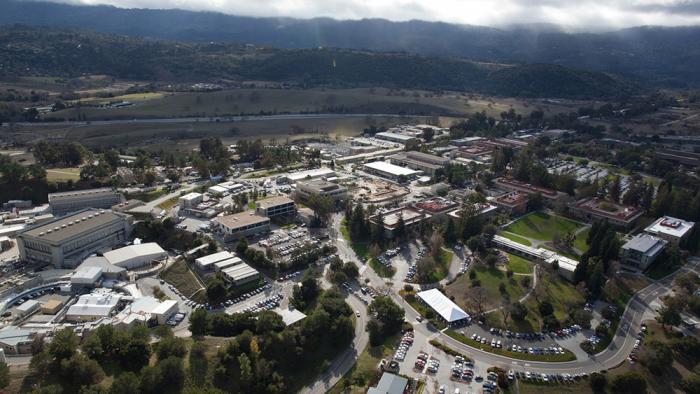 SLAC has a new director: X-ray scientist Chi-Chang Kao. Kao currently serves as Associate Laboratory Director for SLAC's Stanford Synchrotron Radiation Lightsource and Acting Associate Laboratory Director for the lab's Photon Science directorate. He will assume the directorship on November 1.
SLAC has a new director: X-ray scientist Chi-Chang Kao. Kao currently serves as Associate Laboratory Director for SLAC's Stanford Synchrotron Radiation Lightsource and Acting Associate Laboratory Director for the lab's Photon Science directorate. He will assume the directorship on November 1. Gravitational waves were first predicted by Albert Einstein almost a century ago, but scientists have yet to observe them directly.
Gravitational waves were first predicted by Albert Einstein almost a century ago, but scientists have yet to observe them directly.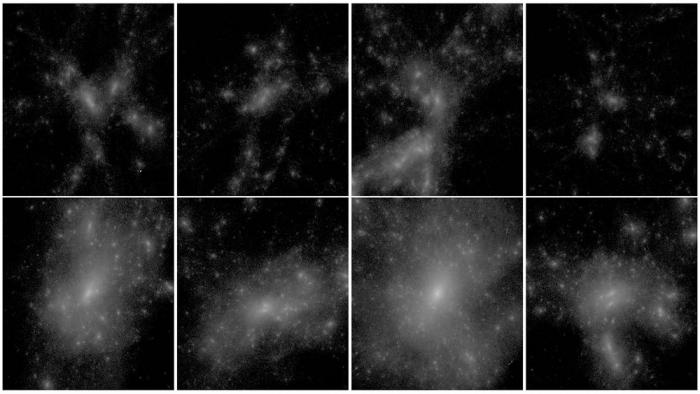 Scientists from the groups of professors Risa Wechsler and Tom Abel at the Kavli Institute for Particle Astrophysics and Cosmology, an institute run jointly by Stanford University and SLAC National Accelerator Laboratory, are busily crafting enough computer simulation tools to outfit a major stadium tour—if simulations were musical instruments and the KIPAC scientists a supergroup. They’ve managed to meld their different strains of software into the type of melody that dark matter just might dance to.
Scientists from the groups of professors Risa Wechsler and Tom Abel at the Kavli Institute for Particle Astrophysics and Cosmology, an institute run jointly by Stanford University and SLAC National Accelerator Laboratory, are busily crafting enough computer simulation tools to outfit a major stadium tour—if simulations were musical instruments and the KIPAC scientists a supergroup. They’ve managed to meld their different strains of software into the type of melody that dark matter just might dance to.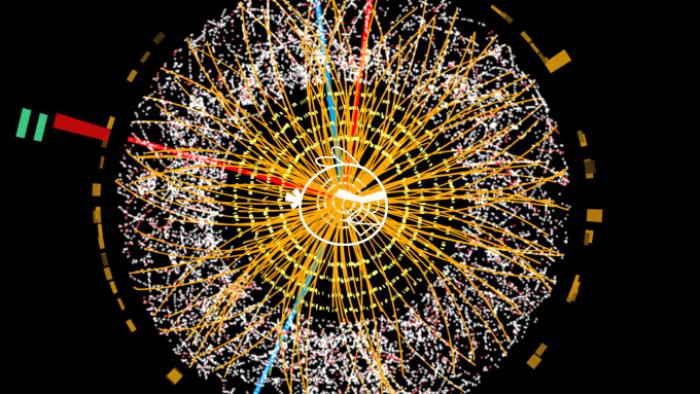 CERN and Angry Birds-creator Rovio announced last Friday that they will team up to produce a learning program for children between 3 and 8 years old.
The partnership will focus on the Angry Birds Playground brand, which is designed to make learning about physics fun and accessible for all ages. It is based on Finland’s national kindergarten curriculum.
CERN and Angry Birds-creator Rovio announced last Friday that they will team up to produce a learning program for children between 3 and 8 years old.
The partnership will focus on the Angry Birds Playground brand, which is designed to make learning about physics fun and accessible for all ages. It is based on Finland’s national kindergarten curriculum. CURRENT ISSUE THE MAGAZINE Current Issue Next Issue Back Issues Digital Editions Preview the Magazine Special Issues E-mail Newsletter About the Magazine Subscribe , Renew or Give a Gift Subscriber Benefits Trips Tours Advertise Advertiser Links Sweepstakes Press Room Contact Us COLUMNISTS Bob Berman Glenn Chaple Tony Hallas David H . Levy Stephen James O'Meara NEWS OBSERVING Astronomy News Liz and Bill's Cosmic Adventures Dave's Universe videos StarDome Plus Intro to the Sky Astronomy for Kids Urban Skies Astronomy Myths The Sky this Week The Sky this Month Star Atlas Ask Astro Astro Imaging Constellation Observing Glossary EQUIPMENT Products Reviews How To MULTIMEDIA Picture of the Day Reader Photo Gallery Videos Podcasts Wallpaper COMMUNITY Why Join Local Group Blog Dave's Universe
CURRENT ISSUE THE MAGAZINE Current Issue Next Issue Back Issues Digital Editions Preview the Magazine Special Issues E-mail Newsletter About the Magazine Subscribe , Renew or Give a Gift Subscriber Benefits Trips Tours Advertise Advertiser Links Sweepstakes Press Room Contact Us COLUMNISTS Bob Berman Glenn Chaple Tony Hallas David H . Levy Stephen James O'Meara NEWS OBSERVING Astronomy News Liz and Bill's Cosmic Adventures Dave's Universe videos StarDome Plus Intro to the Sky Astronomy for Kids Urban Skies Astronomy Myths The Sky this Week The Sky this Month Star Atlas Ask Astro Astro Imaging Constellation Observing Glossary EQUIPMENT Products Reviews How To MULTIMEDIA Picture of the Day Reader Photo Gallery Videos Podcasts Wallpaper COMMUNITY Why Join Local Group Blog Dave's Universe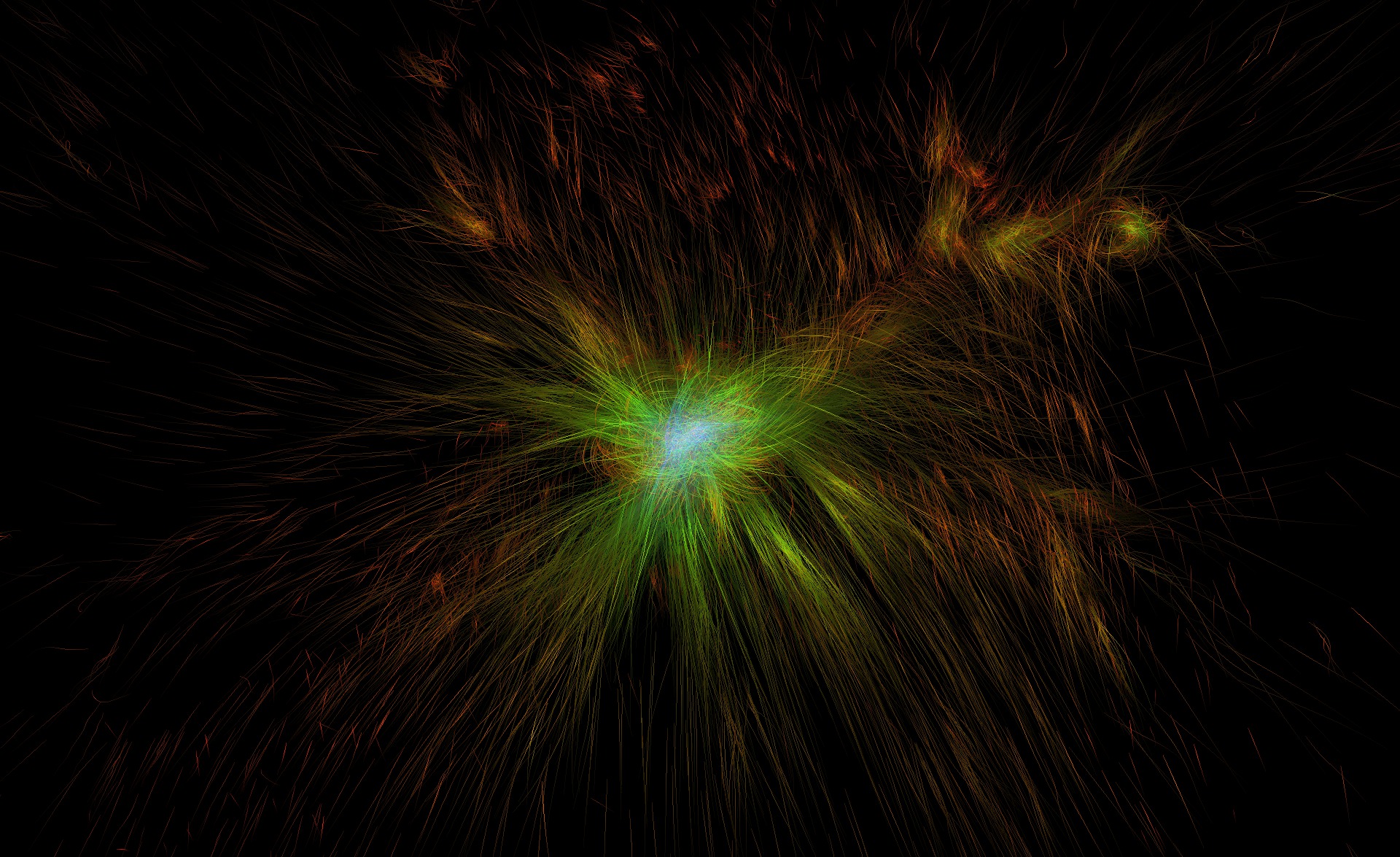 In a darkened barn in Sweden in 1941, astronomer Erik Holmberg constructed two identical sets of 37 lightbulbs, arranged in rings, to study the effects of a close encounter by two passing galaxies.
Using a light sensor connected to a device that measured electric current, Holmberg carefully charted, by hand, gravitational effects in energy signatures as he moved the two sets of bulbs closer together, and noted the emergence of "spiral arm" patterns.
In a darkened barn in Sweden in 1941, astronomer Erik Holmberg constructed two identical sets of 37 lightbulbs, arranged in rings, to study the effects of a close encounter by two passing galaxies.
Using a light sensor connected to a device that measured electric current, Holmberg carefully charted, by hand, gravitational effects in energy signatures as he moved the two sets of bulbs closer together, and noted the emergence of "spiral arm" patterns. Every year, particle accelerators play an essential role in scientific discovery, industry and even medicine. But what does it take to make an accelerator run? This video, produced by SLAC National Accelerator Laboratory, takes you into the department that builds klystrons, the devices that propel particles to nearly the speed of light within SLAC’s accelerators.
Every year, particle accelerators play an essential role in scientific discovery, industry and even medicine. But what does it take to make an accelerator run? This video, produced by SLAC National Accelerator Laboratory, takes you into the department that builds klystrons, the devices that propel particles to nearly the speed of light within SLAC’s accelerators. 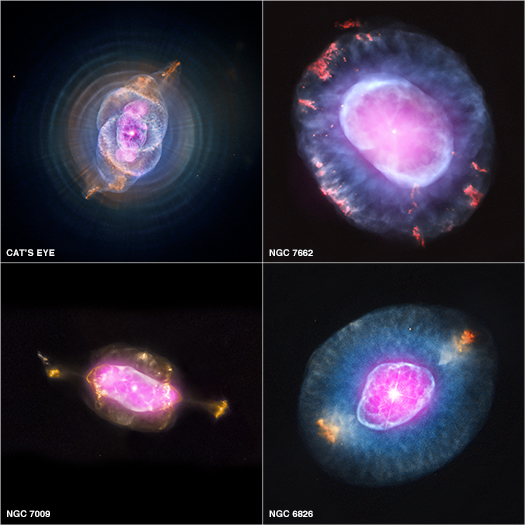 This gallery shows four planetary nebulas from the first systematic survey of such objects in the solar neighborhood made with NASA's Chandra X-ray Observatory.
This gallery shows four planetary nebulas from the first systematic survey of such objects in the solar neighborhood made with NASA's Chandra X-ray Observatory. The Royal Swedish Academy of Sciences has awarded the 2012 Nobel Prize in physics to two scientists who developed groundbreaking experimental methods that are the first steps toward building a new type of supercomputer known as a quantum computer. Their research has also led to the construction of extremely precise clocks that may replace present-day atomic clocks.
The Royal Swedish Academy of Sciences has awarded the 2012 Nobel Prize in physics to two scientists who developed groundbreaking experimental methods that are the first steps toward building a new type of supercomputer known as a quantum computer. Their research has also led to the construction of extremely precise clocks that may replace present-day atomic clocks. If you’ve ever spent much time around astronomers, you’ll know that they tend to like their theme wear — space ties, galaxy t-shirts, satellite lapel pins, etc. To this list, I am thrilled beyond measure to add space clogs. Yes, space clogs. Dansko has come out with a limited edition “Stargazer” version of their standard [...]
If you’ve ever spent much time around astronomers, you’ll know that they tend to like their theme wear — space ties, galaxy t-shirts, satellite lapel pins, etc. To this list, I am thrilled beyond measure to add space clogs. Yes, space clogs. Dansko has come out with a limited edition “Stargazer” version of their standard [...]